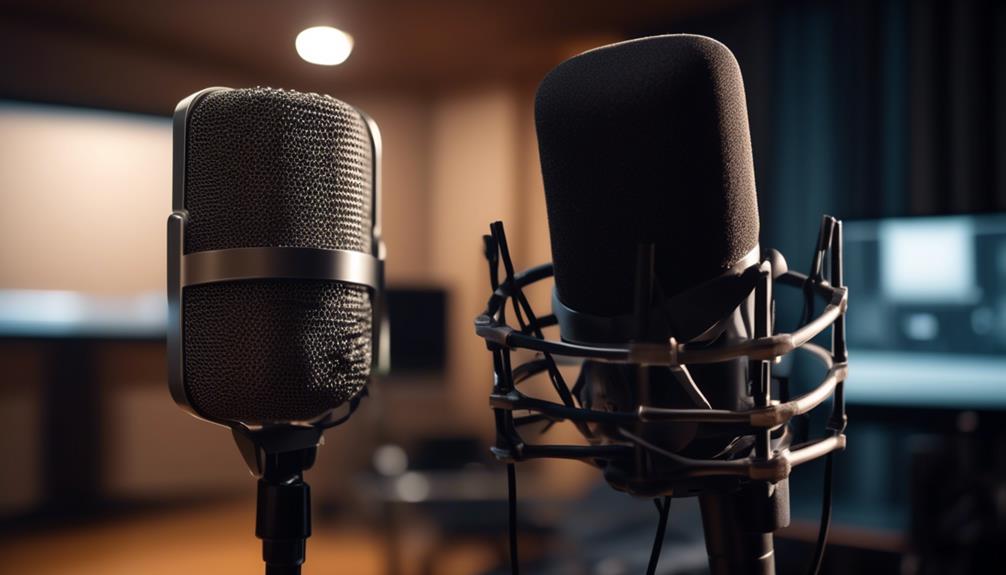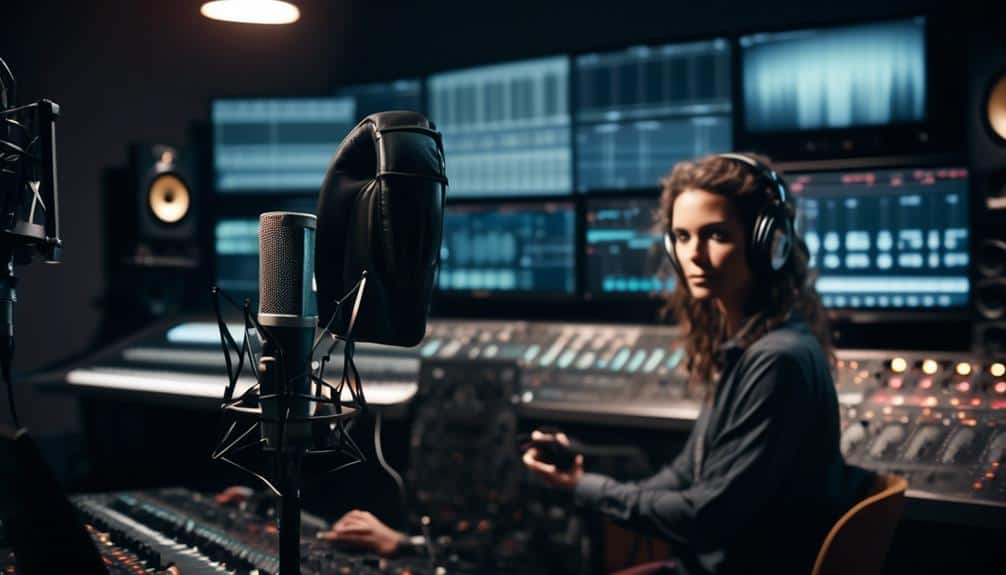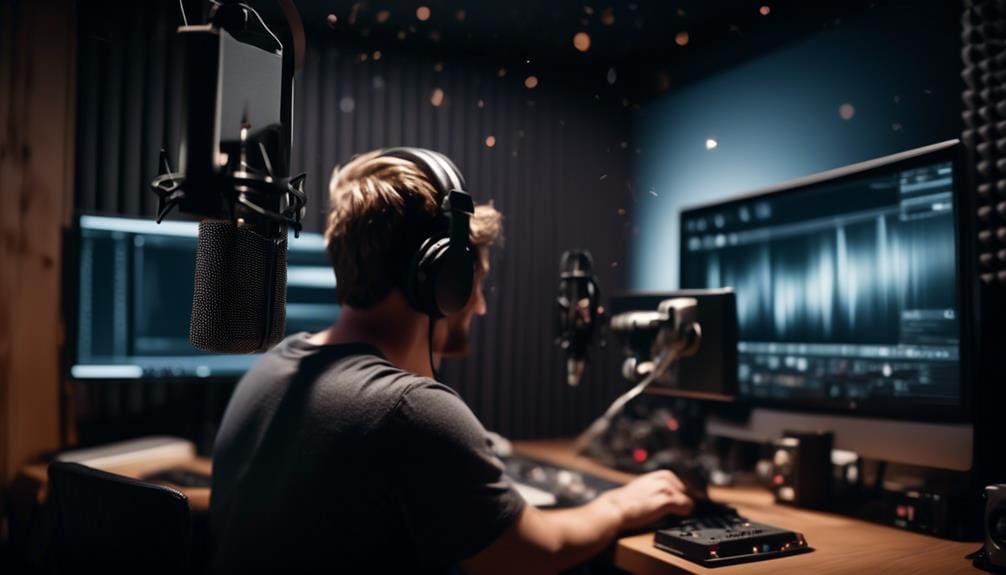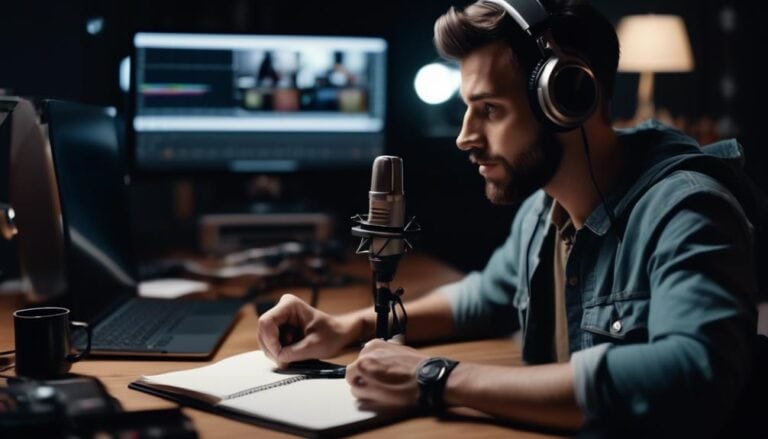From Recording to Broadcasting: A Step-by-Step Podcasting Workflow
Embarking on the journey of podcast creation is akin to setting sail on uncharted waters, filled with possibilities waiting to be discovered. As you navigate the realms of recording, editing, and finally broadcasting your podcast to the world, each step presents its own unique challenges and rewards.
From the initial setup of your recording space to the meticulous process of crafting engaging show notes, every detail contributes to the success of your podcast. But what lies beyond the technical aspects of creation? What strategies can elevate your podcast from a mere recording to a widely recognized broadcast?
Key Takeaways
- Create a conducive recording space with soundproofing and appropriate lighting for optimal recording conditions.
- Invest in quality equipment like microphones, audio interfaces, and headphones for clear audio during recording and editing.
- Craft compelling content with clear show notes, engaging guest bios, and relevant links to keep listeners interested.
- Utilize user-friendly editing software and tools for post-production tasks like audio mixing, noise reduction, and equalization to enhance the overall podcast quality.
Setting Up Your Recording Space

Transform your designated recording space into a cozy haven that fosters creativity and minimizes distractions. To enhance your podcasting experience, consider implementing soundproofing techniques to reduce outside noise interference. Hang soundproofing panels on walls or place acoustic foam strategically to improve audio quality. When setting up your lighting, opt for a soft, diffused light source to avoid harsh shadows on your face. Experiment with different lighting setups to find what works best for your recordings.
Invest in ergonomic furniture to ensure comfort during long recording sessions. A supportive chair and a well-positioned desk can make a significant difference in your productivity. Additionally, personalize your space with room decor that inspires you. Display artwork, plants, or motivational quotes to create a welcoming atmosphere. By incorporating these elements, you can transform your recording area into a sanctuary where your creativity can thrive.
Choosing the Right Equipment
Enhance your podcasting experience by carefully selecting the essential equipment needed to bring your recordings to life. When it comes to choosing the right equipment for your podcasting setup, two crucial aspects to consider are microphone selection and budget considerations, as well as room acoustics and soundproofing techniques.
Essential Equipment for Podcasting:
| Equipment | Description | Recommended Options |
|---|---|---|
| Microphone | The cornerstone of your setup. Invest in a quality microphone that suits your voice. | Blue Yeti, Audio-Technica AT2020 |
| Audio Interface | Connects your microphone to your computer and enhances sound quality. | Focusrite Scarlett 2i2, PreSonus AudioBox |
| Headphones | Essential for monitoring audio while recording and editing. Look for comfort and good sound isolation. | Sony MDR7506, Audio-Technica ATH-M50x |
Choosing a microphone that complements your voice is key to achieving professional audio quality. Consider your budget and invest in the best microphone you can afford. Additionally, pay attention to your recording environment by optimizing room acoustics and implementing soundproofing techniques to minimize unwanted background noise. By selecting the right equipment and optimizing your recording space, you'll be on your way to producing high-quality podcasts.
Recording and Editing Your Podcast

Ready to take your podcast to the next level?
Get ready to enhance your sound quality with some expert tips and explore various editing software options to make your episodes shine.
With the right techniques and tools, your podcast will stand out from the crowd and keep your listeners coming back for more.
Sound Quality Tips
To ensure your podcast captures the attention of your audience, focus on optimizing the sound quality during both the recording and editing processes. Here are three key tips to help you achieve top-notch audio quality:
- Microphone Placement: Position your microphone correctly to capture clear and crisp audio. Experiment with distances and angles to find the best setup for your voice.
- Noise Reduction Techniques: Use audio editing tools to eliminate background noise and enhance the overall sound clarity of your podcast. This can involve noise reduction plugins or simple techniques like recording in a quiet environment.
- Consistent Audio Levels: Maintain consistent audio levels throughout your podcast episodes to ensure a pleasant listening experience. Use compression and normalization during the editing process to even out volume fluctuations.
Editing Software Options
When selecting editing software for recording and editing your podcast, prioritize user-friendly interfaces and robust features that streamline your production process. Look for tools that offer seamless audio mixing capabilities to blend your sound elements effortlessly.
These software options should also provide a range of post-production tweaks such as noise reduction, equalization, and the ability to add music or sound effects. Popular editing programs like Adobe Audition, Audacity, or GarageBand offer intuitive interfaces and a plethora of editing tools to help you craft professional-sounding podcasts.
Experiment with different software to find the one that best suits your style and workflow. Remember, the right editing software can make a significant difference in the quality and efficiency of your podcast production.
Crafting Compelling Show Notes
Ready to captivate your audience with compelling show notes?
Learn the art of summarizing key takeaways, crafting engaging guest bios, and strategically adding relevant links to enrich the podcast experience.
These elements won't only entice your listeners but also provide them with valuable resources and insights.
Let's dive into the world of crafting show notes that leave a lasting impact!
Writing Key Takeaways
Craft compelling show notes that engage your audience and leave a lasting impact on listeners. Show notes aren't just summaries; they're gateways to your podcast's world.
Here are three key takeaways to make your show notes stand out:
- Outline Clear Headings: Break down your show notes into sections with clear headings. This helps listeners navigate the content easily and find what interests them the most.
- Include Timestamps: Incorporate timestamps for significant points discussed in the episode. This allows listeners to jump to sections they find most compelling, enhancing their overall listening experience.
- Add Call-to-Actions: Encourage engagement by including calls-to-action in your show notes. Whether it's asking for feedback, suggesting related episodes, or prompting social media interaction, CTAs can foster a stronger connection with your audience.
Including Guest Bios
Crafting compelling show notes involves weaving captivating narratives about your guests, immersing your audience in their stories and expertise.
When including guest bios, focus on creating engaging content that highlights the most exciting aspects of their background. Keep the bio concise but meaningful, mentioning key achievements, experiences, and any relevant information that will spark curiosity in your listeners.
Use the bio to set the stage for the upcoming conversation, giving your audience a taste of what to expect. By crafting bio highlights that resonate with your listeners, you enhance guest engagement and create anticipation for the episode.
Adding Relevant Links
As you draw your audience closer with captivating guest bios, the next step is to seamlessly integrate relevant links into your show notes, enriching the listening experience and providing valuable resources for your listeners.
Here are three key ways to make your show notes compelling:
- Direct Links: Include clickable URLs to your guest's website, social media profiles, or any resources mentioned in the episode for easy access.
- Additional Resources: Enhance your episode by adding links to related articles, books, or videos that can provide further insights to your listeners.
- Promotional Links: Utilize this space to showcase your own work or products, or even affiliate links to support your show's growth through effective marketing strategies.
Selecting a Podcast Hosting Platform
When selecting a podcast hosting platform, it's crucial to consider your specific needs and goals to ensure a seamless broadcasting experience. Your choice can impact your monetization strategies, advertising partnerships, analytics tracking, and audience engagement. Here is a comparison table of three popular podcast hosting platforms to guide you in making an informed decision:
| Podcast Hosting Platform | Key Features | Price |
|---|---|---|
| Podbean | Monetization tools, built-in advertising options | Starts at $9/month |
| Buzzsprout | Detailed analytics, easy audience engagement | Starts at $12/month |
| Anchor | Free hosting, monetization opportunities | Free |
Each platform offers unique benefits tailored to different podcasters. Podbean provides robust monetization options, Buzzsprout focuses on detailed analytics for better engagement, while Anchor stands out for its free hosting and easy monetization. Consider your requirements and goals to select the platform that aligns best with your podcasting aspirations.
Submitting to Podcast Directories

To expand your podcast's reach and visibility, the next step after selecting a podcast hosting platform is ensuring your podcast is submitted to various podcast directories. This step is crucial in reaching a wider audience and maximizing your podcast's impact.
Here's what you need to do:
- Optimize Your Podcast Metadata: Ensure your podcast title, description, and keywords are relevant and engaging. This will help your podcast show up in searches within directories.
- Utilize Social Media Platforms: Share your podcast links on social media to attract more listeners. Engage with your audience, ask for feedback, and create a community around your podcast.
- Collaborate with Other Podcasters: Partnering with other podcasters can help cross-promote each other's shows, expanding your reach. It's a win-win situation where both parties benefit from increased exposure.
Promoting Your Podcast on Social Media
Promote your podcast on social media to connect with a wider audience and boost listener engagement effectively. Leveraging various platforms can significantly impact your social engagement and audience growth. Here's a quick guide to maximize your reach:
| Platform | Strategy |
|---|---|
| Create visually appealing posts and stories to tease episodes. | |
| Engage with followers, use hashtags, and share behind-the-scenes. | |
| Utilize groups, go live, and share user-generated content. |
Frequently Asked Questions
How Can I Engage With My Listeners and Build a Community Around My Podcast?
To engage with your listeners and build a community around your podcast, focus on authenticity. Share personal stories, ask for feedback, and create interactive segments. Respond to comments, host live Q&A sessions, and involve your audience in shaping future episodes.
What Are Some Common Mistakes to Avoid When Recording and Editing a Podcast?
Focus on audio quality by using a quiet space, good microphones, and checking levels. When editing, avoid over-processing, maintain natural sound, and listen critically for mistakes. Stay authentic and engaging to keep listeners hooked.
How Can I Monetize My Podcast and Generate Revenue From It?
To monetize your podcast effectively, explore sponsorship opportunities, tap into affiliate marketing, sell merchandise, and consider setting up a Patreon for support. Diversifying revenue streams can help you generate income and grow your show.
Are There Any Legal Considerations or Copyright Issues I Should Be Aware of When Producing a Podcast?
When producing your podcast, it's crucial to be aware of legal considerations like fair use and licensing. Respect intellectual property rights by obtaining necessary permissions. Stay creative and engaging while ensuring you comply with copyright laws.
How Can I Track the Success and Performance of My Podcast in Terms of Listenership and Engagement Metrics?
To track your podcast's success, analyze audience demographics, implement engagement strategies, and use marketing tactics. Gather listener feedback through surveys and social media interactions. This data will help you understand your listeners and improve your content.
Conclusion
Now that you've mastered the art of podcasting, it's time to share your voice with the world!
With the right equipment and a killer recording space, you're ready to create compelling content that will captivate your audience.
Don't forget to promote your podcast on social media and submit it to directories to reach a wider audience.
Get ready to take the podcasting world by storm!








